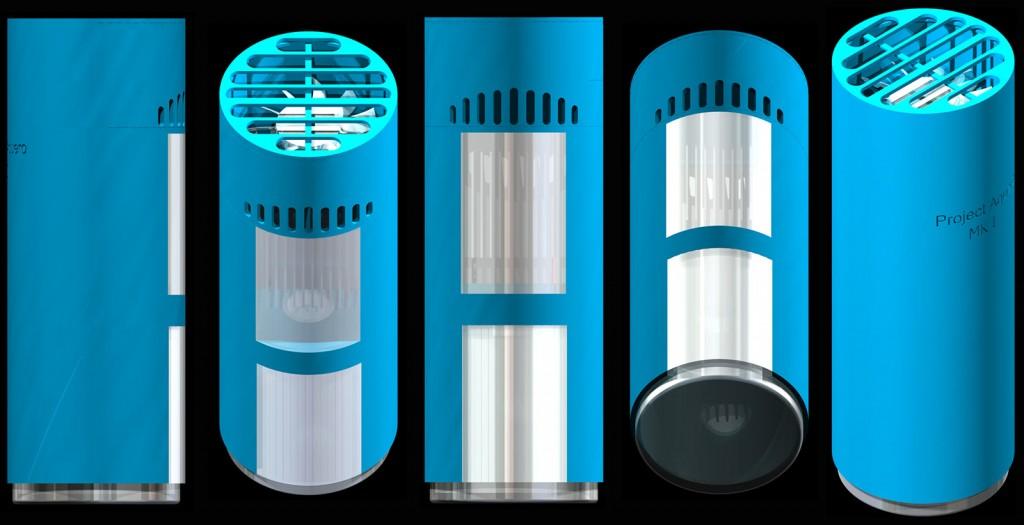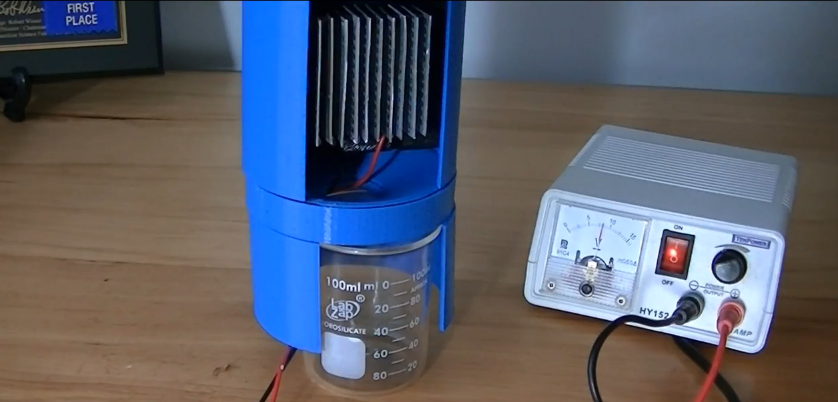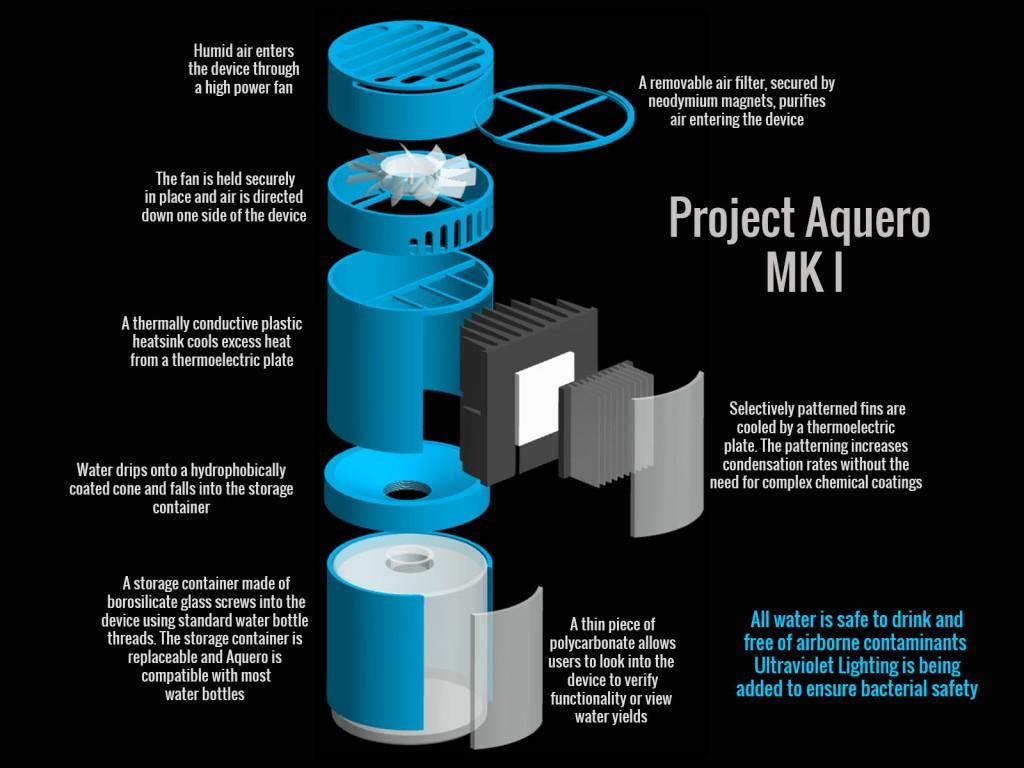Only about 2.5% of the water on our planet is actually drinkable fresh water, and of that water less than half is actually safe for us to consume. A lack of clean and drinkable water isn’t just a problem faced by those who live in arid desert regions; there are many areas of the world where residents are unable to use local sources of freshwater due to pollution or simply the inability to remove natural impurities. There are also people living in disaster areas where the local water delivery system has been disrupted or the water otherwise contaminated.
But a group of researchers behind the Project Aquero initiative believe that their mostly 3D printable, portable, self-filling water bottle is one way to combat those types of water shortages. Their MK1 prototype is currently capable of generating about 50mL of water per hour under average conditions. Granted, that isn’t a huge amount of water, but it is a lifesaver as an emergency or ancillary source of fresh water.
The process used by Project Aquero is actually very simple and based on common cooling and water production technology. There is a small but powerful fan on the top of the device about the size of a computer fan that blows warm air down onto a plastic heatsink. This rapid change in temperature causes moisture to condense on specially designed fins where it will then drip down into the collection bottle. There is also a specially designed pattern on the condenser fins that allow it to shed water as quickly as possible, increasing the amount of water that will be brought to the dew point.
Project Aquero is essentially a 3D printable dehumidifier device that has simply been shrunk down to the size of a typical water bottle. And that portability is what makes it such an interesting project. The final water collection device could be included in survival kits for lifeboats or even carried by hikers or people camping in remote areas.
Below is a video of the device being 3D printed and the prototype being assembled:
Since almost the entire device is 3D printable, and as a growing number of remote and developing areas gain access to low-cost 3D printing, it could easily be replicated and distributed in times of emergency. And even developed areas could benefit from a low-cost device like this. Organizations like FEMA could potentially pass them out during disaster relief or cleanups rather than  spending large amounts of resources bringing drinkable water into affected areas.
spending large amounts of resources bringing drinkable water into affected areas.
Project Aquero’s self-filling water bottle is of course still in the development stage and still has some kinks to work out. Currently the device needs to be powered, but it can easily be connected to small solar panels that can provide plenty of power to run the fan. Additionally, the researchers are looking into ways to expose the water produced to further purification methods to ensure potability. They are looking into integrated carbon filters, and plan to include a PET bottle to facilitate solar bacterial irradiation and even a low power UV bulb that can further prevent bacterial contamination of the water being produced.
Currently the project is accepting donations on their website if you’re interested in helping the small team take Project Aquero to the next development stage. On a recent Reddit AMA the team suggested that their next step was to take the project to the crowdfunding stage and would be working towards that goal soon. What do you think about this 3D printable clean water solution? Tell us about it on the Project Aquero forum thread over on 3DPD.com.
Subscribe to Our Email Newsletter
Stay up-to-date on all the latest news from the 3D printing industry and receive information and offers from third party vendors.
You May Also Like
3D Printing Unpeeled: New Arkema Material for HP, Saddle and Macro MEMS
A new Arkema material for MJF is said to reduce costs per part by up to 25% and have an 85% reusability ratio. HP 3D HR PA 12 S has been...
3D Printing News Briefs, January 20, 2024: FDM, LPBF, Underwater 3D Printer, Racing, & More
We’re starting off with a process certification in today’s 3D Printing News Briefs, and then moving on to research about solute trapping, laser powder bed fusion, and then moving on...
3D Printing Webinar and Event Roundup: December 3, 2023
We’ve got plenty of events and webinars coming up for you this week! Quickparts is having a Manufacturing Roadshow, America Makes is holding a Member Town Hall, Stratafest makes two...
Formnext 2023 Day Three: Slam Dunk
I’m high—high on trade show. I’ve met numerous new faces and reconnected with old friends, creating an absolutely wonderful atmosphere. The excitement is palpable over several emerging developments. The high...

































